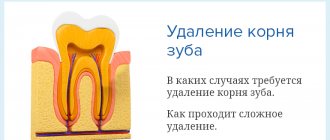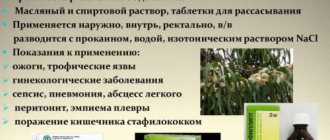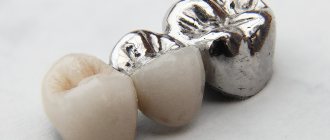Imagine that you have a slight toothache. Think about what you usually do in such a situation. Most people take painkillers and hope it's nothing serious. And only two out of ten people will immediately make an appointment with the dentist.
Yes, there are situations when there is no time for dental treatment. But the inflammatory process will not wait until you are free. Caries gradually but quickly develops into deep tissue lesions. The result is deplorable - a damaged tooth. And then a person is often inclined to think that the destructive process has gone too far and it is better to immediately remove the affected tooth.
We advise you not to draw your own conclusions!
To decide whether to treat a tooth or remove it, the patient must consult a dentist. Only a doctor, after a thorough examination and x-ray, can correctly assess the situation and make the right decision.
Remember that tooth extraction is an extreme form of treatment! Modern dentistry is aimed at saving the tooth. After all, a well-treated tooth can serve for a long time, and you will always have time to place an implant.
Existing indications for surgery
With a radical method of solving dental problems, the tissues of the oral cavity are inevitably injured. Due to damage to nerves and blood vessels, the patient experiences moderate pain, the injured area turns red and swells.
To minimize the consequences of removal and eliminate possible complications, the patient needs to have a strong immune system. The procedure is contraindicated for physically weakened people and those in whose body pathological processes are detected.
That is why in a number of situations surgery under a certain set of circumstances is excluded.
All indications should be divided into two subgroups:
- events in which surgical intervention must be performed urgently;
- when the extraction can be scheduled for a specific time, eliminating rush.
Immediate measures
When figuring out “when and why it is necessary to remove a tooth and in what cases this should not be done,” it is important to know that urgent removal is carried out in the presence of an inflammatory process. When inflammation has already led to the appearance of a tumor. Such complications may include granuloma, cyst, phlegmon, abscess, etc. In addition, emergency surgery is performed in case of injury to dental tissue or a fracture of the crown, which leads to the development of neuritis and other damage.
Pulpitis or periodontitis are not indications for mandatory tearing out. Sometimes, with these pathologies, an element of the series can be preserved. This largely depends on the size of the affected area and the individual characteristics of the patient. However, when there is a risk of spreading infection, radical action is inevitable.
Only timely elimination of the source of infectious agents can protect a person from serious consequences in the form of many dangerous diseases.
In what case is it necessary to extract a tooth as planned?
If there is no obvious danger to the body, but damage to dental tissues is 70% or more, pathologies are identified in the root zone and pulp, surgical intervention is planned for a certain time. Typically, the removal procedure is prescribed for advanced periodontitis or degree 3-4 mobility of elements. Sometimes they resort to pulling out before installing braces. Eliminating one or more units frees up space for subsequent movement during leveling.
Third molars are found in many people and are rudiments that have no functional significance. Often their growth occurs in the wrong direction, they do not fully erupt and contribute to the curvature of neighboring elements. This should be kept in mind when asking the question: “is it necessary to remove a wisdom tooth?” The consequences of the formation of molars are naturally inflammatory processes and the appearance of caries. Due to possible serious complications, figure eights are most often pulled out at the first alarming manifestations.
Planned indications also include cases when the patient has excess elements or unformed parts in the oral cavity.
It is up to the dentist to decide whether to perform surgery or not. Only he is able to correctly assess the condition of the patient and his mouth. Dentika specialists consider the clinical picture as a whole, take into account the likely consequences and make a decision. If it is impossible to avoid surgery, they plan to perform a removal procedure.
Features of the structure of wisdom teeth
The structure of a wisdom tooth is no different from other molars and consists of a neck, a root system (4–5 pieces) and a crown. In some cases, root development is disrupted and a single conglomerate is formed, that is, a tooth grows with one root.
Its only difference from its neighbors is that recent studies recognize the wisdom tooth as a rudiment that has lost its functional purpose during the evolutionary development of man. Scientists do not consider it as a full-fledged organ, since some part of humanity does not grow it at all.
However, the wisdom tooth has several parameters that distinguish it from the same “seven”:
- lack of milk precursors, which ultimately complicates eruption and impedes growth. There is no room left for it on the dental arch, which is why various developmental pathologies arise;
- the number of roots is greater than that of other molars - up to 5 pieces. In this regard, problems often arise when removing a wisdom tooth;
- significantly curved roots of the “eights” make cleaning and treatment of root canals very difficult;
- poor blood supply compared to other teeth leads to rapid aging, accompanied by fragility and susceptibility of tissues to caries, despite minimal load;
- many pathological conditions, for example, pathologies of the masticatory muscles, malocclusion, pericoronitis, are associated with the growth of “eights”.
Thus, the appearance of third molars has many more negative consequences than positive ones. Many patients are forced to see a dentist even before they can be seen in person.
Which teeth cannot be treated - when they cannot be removed according to contraindications
A radical method of eliminating pathology may be unacceptable in case of systemic diseases and a weakened human immune system. These circumstances do not guarantee adequate resistance to pathogens and full recovery of the body. The rehabilitation process in this situation can be significantly delayed, which is why the development of numerous complications cannot be ruled out.
Situations in which surgical intervention is extremely undesirable include:
- ARVI;
- 1-3 trimester of gestation;
- menstrual period, as well as 2 days before and after;
- exacerbation of herpes;
- acute form of heart and vascular diseases (stroke, heart attack, crisis);
- head injuries.
Knowing which teeth are pulled out and when elements of the dentition need to be removed, it is important to remember that sometimes extraction cannot be avoided even if there are obvious contraindications. Urgent removal can be carried out in a hospital, when the patient is under constant medical supervision. Indications for compliance with stationary conditions during the operation are:
- poor blood clotting;
- severe diabetes mellitus;
- dysfunction of the central nervous system;
- mental disorders.
We must not lose sight of the fact that in some cases special preparation may be required before surgery. If the patient has pathologies of the heart and blood vessels, the use of adrenaline compounds as anesthesia is undesirable. And hemophilia is a reason for a preliminary plasma transfusion.
Contraindications for pulling out elements of the dentition include some dental problems. These include: herpetic stomatitis, gingivitis, candidiasis, malignant tumors in the oral cavity. If a cancerous tumor is present, it is also eliminated.
So, should I remove the tooth or not? It is important to remember that the above prohibitions on the operation are temporary. When the patient's condition stabilizes, these restrictions will no longer apply to him.
We delete and do not resist
Despite the rapid development of methods in dentistry, there are still situations when it is necessary to agree to tooth extraction. Moreover, most often the procedure must be carried out urgently in order to prevent the spread of infection and relieve pain. Unconditional indications for tooth extraction are:
- An acute form of osteomyelitis caused by a diseased tooth. This is a severe bone lesion that even affects the bone marrow. This state of affairs is dangerous for your health. The disease is accompanied by acute, unbearable pain and body temperature up to 40 degrees.
- Advanced periodontitis. The rotting of the root membrane is very difficult to stop if you try to save the tooth. In this case, the situation is dangerous because the rotting zone can increase and affect neighboring areas of the jaw.
A tooth can also be removed if it is the cause of other diseases: neuritis, phlegmon, lymphadenitis, sinusitis, etc. In addition, there are non-infectious indications for removal . The doctor may suggest removing a tooth if:
- It grows out of line and interferes with the formation of a correct bite. Sometimes timely tooth extraction allows a child to return a beautiful smile without any braces. Sometimes it is necessary to combine these types of treatment.
- It is located at the site of fusion of a broken jaw. If the jaw is injured, surgical intervention is required for its proper fusion. A tooth located at the fracture site may interfere with the process. Once the jaw has been restored, a new tooth can be grown in place of the hole if you deem it necessary for functional or aesthetic reasons.
Extraction
Conventional removal is a procedure that takes a short time (usually a few minutes). Its implementation is relevant when eliminating elements with one root. When it comes to pulling out multi-rooted units, the process is classified as complex. Such cases include working with a figure eight or a severely damaged tooth.
Simple surgery
As noted above, the operation will not require an impressive amount of time. Dentiki dentists act in stages:
- First of all, the doctor examines the patient and inquires about the presence of allergic reactions to drugs, acute and chronic diseases. The specialist also clarifies whether the patient is taking medications during this period.
- Next, the doctor sends the client for an x-ray. Depending on the situation, a targeted or panoramic shot may be needed.
- The dentist begins active work with pain relief. After all, painless extraction is impossible without the use of anesthesia.
- Now the dentist begins to loosen the problem tooth. Carefully pushes back the gum with a special tool, grabs the crown with forceps or pries it up and gently rocks it. These actions allow you to widen the hole and break the periodontal ligaments.
- At the most important stage, the doctor removes the element of the dentition along with the root from the alveoli.
- At the end of the procedure, he will have to stop the bleeding. The damaged area is covered with a cotton swab moistened with an antibacterial compound. After 20-30 minutes it can be removed. This time is usually enough for the bleeding to stop and a blood clot to form.
When deciding which teeth can or cannot be removed (pulled out), you should know that if a pathological formation is observed at the root tip, another x-ray should be taken immediately after surgery. In cases where an x-ray confirms that part of the cyst or granuloma is still inside, it will be planned to remove it.
Dentics also practices non-traumatic methods using an ultrasonic scaler.
Complex extraction
Such operations include the removal of figure eights, elements with curved roots, a destroyed crown, or samples (incisors, canines, molars) previously subjected to resorcinol-formalin therapy. This method of treatment leads to the coloring of individual units in a pinkish color and the fragility of their walls.
The duration of the process can be 1 hour or more. Often the root and coronal zones are sawed to remove them from the bone tissue. In case of retention, the gums are first peeled off. Completely destroyed or broken fragments are initially “turned out” with a special elevator, since it is impossible to get them out with ordinary forceps without preparation, and excessively sharp actions can lead to additional damage to the oral cavity. At the end of the operation, sutures are required.
If a purulent process is detected, the neoplasm is opened and the outflow of the accumulation of pus is organized. Next, the drainage system is removed and secured to prevent suppuration.
Types of tooth extraction
In medical practice, all removal procedures are divided into:
Easy removal
The doctor manages to extract the entire tooth using special forceps; its duration is up to 5 minutes. This is how single-rooted teeth or teeth affected by periodontitis are removed.
Difficult removal
To extract a tooth, the doctor uses auxiliary tools (most often an elevator), and the entire extraction process takes up to 15 minutes. It is most often performed when a part of the root or crown is broken during the removal of multi-rooted teeth.
Atypical removal
It has no clear boundaries in terms of time and extraction method and implies a complex and multi-stage procedure. For this, the doctor can use a bur, an elevator, forceps, a chisel, surgical sutures and needles to close the wound. Often such removal requires from 30 minutes to 2 hours.
This division is reflected both in the cost of the removal itself (due to the various labor costs of the doctor) and in the rehabilitation period:
Simple removal results in minimal damage to surrounding tissue. At the same time, squeezing them with an instrument (and stopping full blood circulation in this area) lasts no more than 5 minutes, and does not in any way affect the subsequent healing of the wound. If you follow the recommendations, the risk of complications is minimal.
Complex removal involves the use of more aggressive instruments and prolonged compression of the walls of the bone alveolus. After it, there may be difficulties with the formation of a blood clot and the development of alveolitis of the “dry socket” type, which is supervised by taking anti-inflammatory drugs and applying turunda with iodoform.
Atypical removal is a surgical intervention in which the doctor violates the integrity of the mucosa, periosteum, or a certain part of the bone. Pressure on tissue can last up to 2 hours, which greatly affects tissue microcirculation. Sometimes a hemostatic sponge is used to stop socket bleeding during such removal. The wound is sutured, which ensures the tightness of the hole and protects it from the development of alveolitis, but it is important to maintain a hygienic regime to avoid infection on the soft tissue.
The doctor’s further tactics, his prescriptions and recommendations for the recovery period depend on how the tooth was removed.
Pulling out milk elements
The first incisors and canines fall out on their own with age. This happens during the period of change in the temporary bite. However, there are often cases when it is necessary to resort to extraction before the onset of natural loss. The need for it is determined by a dental specialist. Parents just have to listen to his recommendations and not put off solving the problem until “later.”
It is a big mistake to consider that various pathologies of milk samples are insignificant and that it is not necessary to take action to eliminate them. Yes, teeth will certainly fall out on their own over time, but pathological deviations may well be transferred to the developing permanent elements. As a result, they will erupt already sick.
Premature tearing is resorted to when inflammation occurs, which is provoked by an advanced form of caries, pulpitis or periodontitis. In all these cases, it is no longer possible to restore the crown. If there is more than 1 year left before the bite changes, the installation of dentures is necessary. Otherwise, the series will inevitably become distorted, which is fraught with consequences.
The most difficult thing in working with children is dealing with fragile dental walls. The child should not be in pain during the procedure. It is very easy to crumble a thin coronal surface with large forceps, so instead they use a special smaller and lighter version.
Reason 1: the bleeding does not stop
Heavy bleeding is the most common complication. Usually occurs in people with bleeding disorders. Before removing a tooth, no tests are required; it is for this reason that the likelihood of this particular complication is high. If you know about your problem, be sure to tell your doctor. In this case, the specialist may prescribe medications to stop the bleeding or apply sutures. If the blood does not stop or suddenly “gushes out like a fountain” shortly after the operation, immediately go to the hospital or call an ambulance.
Extraction of problematic eights
Most often, molars initially have an incorrect position or are bent during the process of formation. When asking a specialist whether “it’s worth pulling out a tooth,” keep in mind that such elements must be eliminated. Without timely surgical intervention, they can interfere with the normal functioning of neighboring units, destroy their root system, lead to the curvature of an entire row of teeth and the development of harmful bacteria in the oral cavity.
Removal is a complex process. First of all, the doctor cuts the gum and moves it back. Then he carefully loosens and “turns” the figure eight using an elevator. Often, initially he has to saw the crown with a drill, which involves further extraction in parts. Only after all necessary actions have been completed, the dentist proceeds to suturing.
How to restore a damaged tooth?
Treatment of a damaged tooth involves the following steps:
- examination by a dentist and assessment of further “future” damaged teeth;
- restoration of the stump area using a pin or inlay. The dentist treats the canals, strengthens the unit from the inside, thereby providing reliable support for the filling;
- The crown is built up using a composite material. If the work is done efficiently, the tooth can be visually almost indistinguishable from a natural one. The dentist repeats the shape, color and even transparency.
Possible complications
Any operation is associated with a number of unpleasant moments for the patient that arise after it is performed. Moderate pain, swelling, active secretion of saliva, blood, difficulty opening the mouth and poor general condition are the norm. All these “side effects” completely disappear after a certain time. As a rule, with a simple procedure, negative manifestations are neutralized within 2-3 days. In difficult situations, rehabilitation may take 1 week or even more.
When determining why a tooth should be removed and who should do it, it should be remembered that one of the most severe complications of removal is alveolitis. This pathology is an inflammatory process in the hole left after the removal of a fragment of the dentition. With progressive inflammation, a person’s temperature rises, the smell of rot appears from the oral cavity, and the wound itself becomes covered with a gray coating. The development of pathology is accompanied by increasing pain. Often the sharp pain radiates to the eye, temple or ear. This problem requires an urgent solution. Otherwise, further infection of the entire body is inevitable.
The gums can also become inflamed. This happens mainly due to excessive tissue trauma. The inflammatory process is accompanied by active suppuration. If you ignore the situation, the occurrence of periostitis is possible.
Equally important in the postoperative period is the presence of a blood clot closing the wound. If it is not there, the hole dries out. This is accompanied by bad breath and severe redness of the injured area. Sometimes, during a complex procedure, the nerve endings become irritated. The patient's tongue, lips, cheeks, and even chin may become numb.
Most often, these negative sensations disappear after 5-10 minutes.
Is it painful to remove a wisdom tooth?
Many patients delay wisdom tooth removal due to fear of pain. Such fears in modern dentistry are absolutely groundless, since anesthetics are necessarily used for the procedure. Discomfort occurs when the effect of the drugs wears off and the analgesic effect decreases. But this is a physiological process that fades away on its own after some time. In addition, there is absolutely no need to endure pain; the doctor will prescribe medications to alleviate the postoperative condition.
When removing a wisdom tooth, some patients experience painful symptoms for a number of reasons:
- drug addiction;
- extensive purulent process;
- abuse of painkillers.
Also, the degree of pain depends on the method of removal, the condition of the wisdom tooth, and its location. For example, surgery on the upper jaw is easier. But removing a wisdom tooth from the lower jaw is more problematic due to the structural features of the jaw and large curved roots.
How does healing proceed?
The tissues usually heal within 2-3 weeks. During this period, a person often experiences itching, indicating the proper course of the process. During rehabilitation, it is enough to follow the recommendations of your doctor to avoid negative consequences.
In the absence of complications, healing proceeds quickly and does not cause any particular inconvenience to the patient. But if severe pain and other unnatural manifestations occur during the recovery period, you should consult a specialist as soon as possible. Painful sensations can signal inflammation and the appearance of dangerous pathologies.
Postoperative care
To avoid disruptions in tissue restoration after surgery, follow a number of tips from dentists:
- Avoid eating for 2-3 hours after the procedure;
- do not touch the injured area with your tongue, fingers or foreign objects;
- do not chew on the side where the removal was performed;
- on the first day, refrain from cleaning your mouth;
- do not drink drinks through a straw (so as not to create a vacuum);
- do not go to the bathhouse, solarium, do not take a hot shower;
- eliminate sour, salty and sweet foods from your diet for a while;
- try not to get too cold;
- Check with your doctor in advance about what painkillers you can take after surgery.
Case 4. The source of inflammation at the root of the tooth - the so-called. cyst
Imagine the situation.
A tooth that previously did not have a filling or was previously treated endodontically begins to hurt. An examination is carried out, X-ray control is done, but often a more informative cone-beam computed tomography CBCT or, as many say, a 3D x-ray is performed. A dental cyst is detected. The doctor recommends removing the tooth because there is a large area of inflammation at the top of the tooth root, caused by an infection in the root canal. The infection gets beyond the root tip and causes inflammation. This inflammation can be treated by removing the infection from the root canal. It is easier for a doctor who does not have the knowledge and treatment methods to remove a tooth.
How to do it right:
There is no need to remove the tooth. In the case of a dental cyst, it is necessary to carry out diagnostics, examination and high-quality treatment under the control of an operating microscope with isolation of the working field, followed by hermetically sealed restoration of the tooth at the stage of endodontic treatment. The recommendation is simple:
before removing a tooth, consult a professional. You may not need tooth extraction! This means that sinus lifting, implantation and prosthetics procedures following the removal will not be necessary.
approximate cost
Having found out in what cases a tooth must be removed, how to understand that it is impossible or, on the contrary, it is necessary to remove it without delay, whether this can be prevented - it is worth finding out the prices for services. Thus, a procedure at Dentic will cost a client an average of 3,978 rubles. A lot depends on individual aspects: the patient’s condition, the degree of neglect of the case, drug tolerance. And, of course, if, at the time of treatment, concomitant pathological abnormalities are discovered that require preliminary elimination, surgical intervention will be more expensive.
Is it possible to restore a damaged tooth?
Yes, you can. But everything will depend on the volume of the lost coronal part and the general condition of the oral cavity.
For restoration, modern dentists use the following two main methods:
- installation of pins (reinforcement) made of fiberglass or titanium;
- introduction of so-called stump inlays.
If more than 50% of the unit is destroyed, and the dentist has doubts that the crown restored with a stump or pin will not withstand the chewing load, a metal-ceramic crown is installed on the stump pin inlay. When restoring teeth, it is mandatory to clean and fill the canals to avoid the development of caries.











